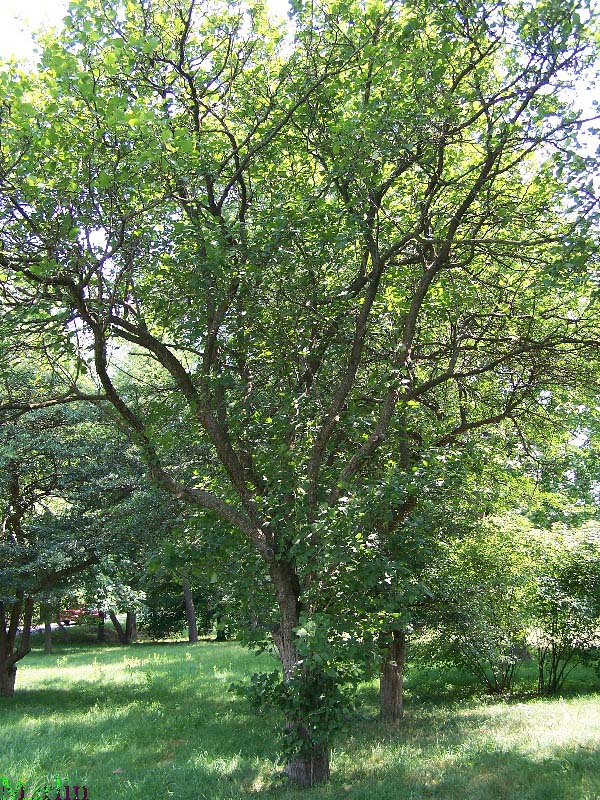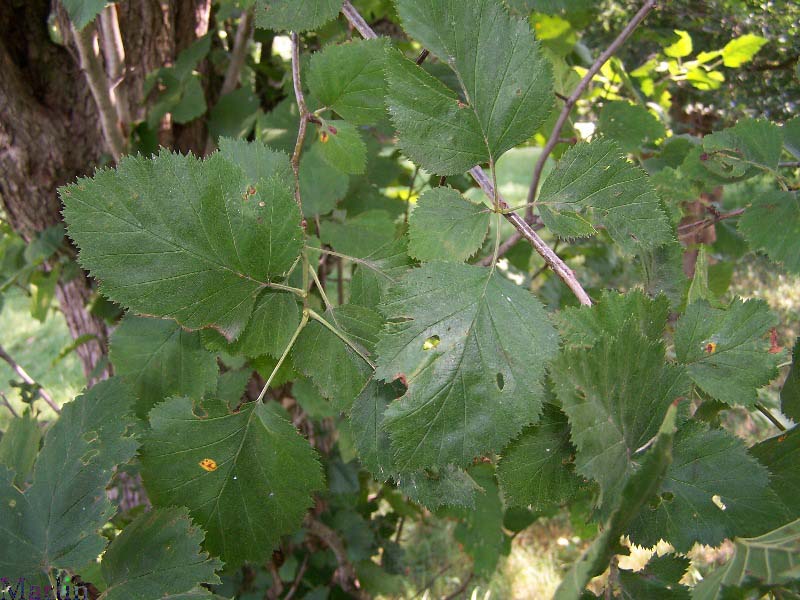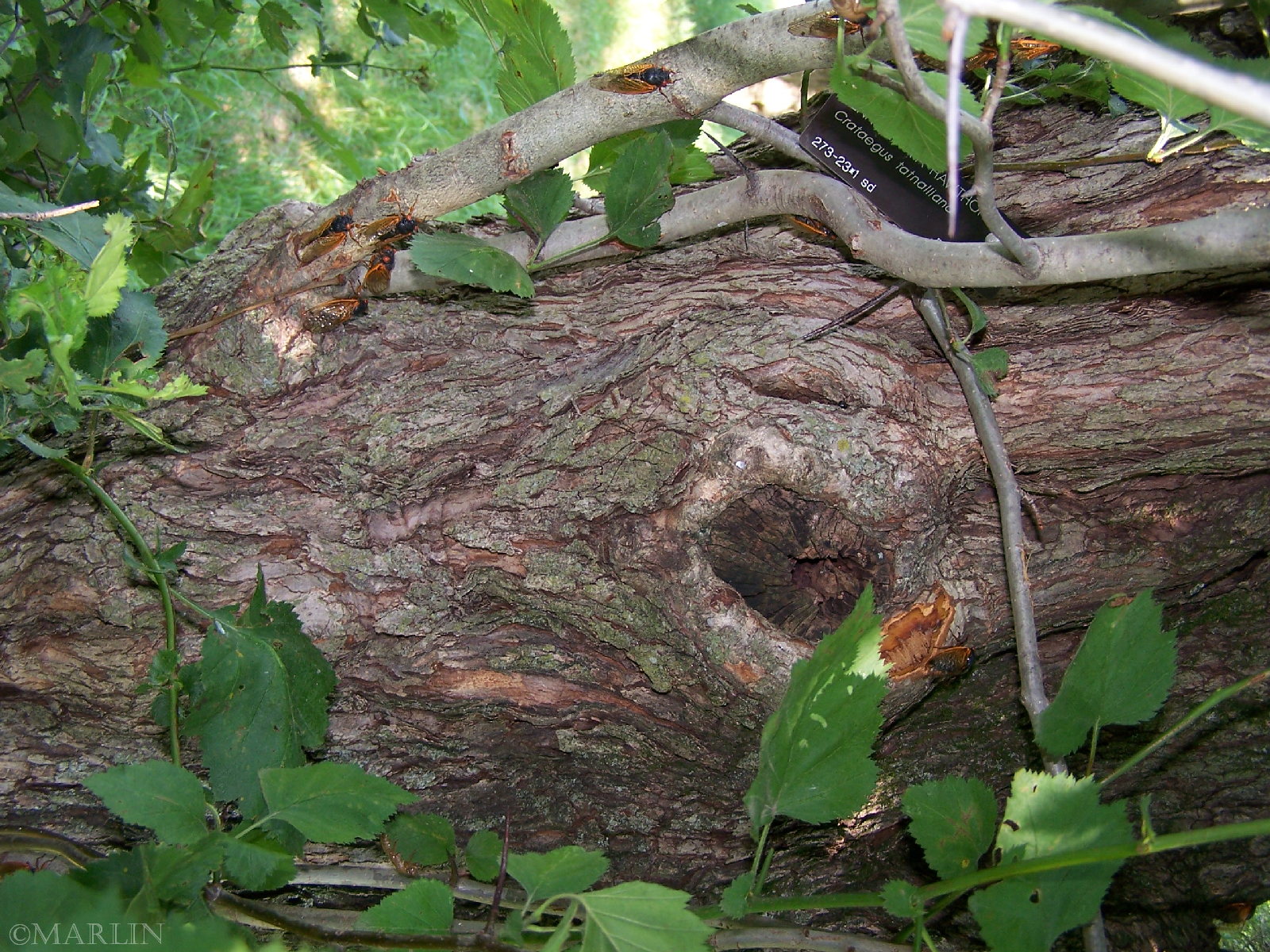Pennsylvania Hawthorn – Crataegus tatnalliana
Pennsylvania hawthorn with multiple 17-year periodic cicada, Magicicada sp. brood XIII, 2007
Pennsylvania Hawthorn – Crataegus tatnalliana
Syn. Crataegus pennsylvanica Ashe [2]. This tree is native to Pennsylvania, Delaware, and Maryland.
Pennsylvania hawthorn, also called Tatnall’s hawthorn, is native in Pennsylvania, West Virginia, Maryland and Delaware, and is cultivated elsewhere. This species does not have the objectionable thorns of the more well-known Cockspur (Crataegus crus-galli). White flowers bloom in early summer are said to have a disgusting smell of rotten fish (I’ll check this out next time) followed by rather large (1 in.) fruit suitable for jelly or drying or eating raw as a dessert. Said to have a delicious semi-sweet flavor [2].

This tree has an open, spreading crown and grows to about 30 feet in thickets, forest glades and understory edges. Prefers moist soil and partial shade but will tolerate sun. Tree does not seem to be picky about soil, growing well in clay, sand and chalk. Fruit production is highest in trees grown in full sun. Can be grown from seed or grafted; grafts can flower and bear fruit in their third year [2].
Scientific evidence exists hawthorn fruit and flowers have medicinal properties as a treatment for chronic heart failure. Ten double-blind, randomized clinical trials showed hawthorn extract, used as an adjunct to conventional treatment, to be “more beneficial than placebo” in treating 855 patients with chronic heart failure. Shortness of breath and fatigue “improved significantly” compared to placebo [3]. In plain language, “Hawthorn extract may be used as an oral treatment for chronic heart failure” although the trials did not all measure the same outcomes and several did not designate what conventional treatments the patients also received. Data obtained for meta-analysis was found “suggestive” of a benefit from hawthorn extract when used in combination with conventional treatments [3].

Hawthorn wood is dense and rot-resistant, and was used for fenceposts and other applications where a moist environment would be encountered. Hawthorn trees are noted as having magical properties in many Neolithic and medieval cultures. Superstitious people today still cling to a belief in faeries and other supernatural beings said to live in close association with the genus (see Wikipedia ‘Crateagus’ ).
References
- USDA, ARS, National Genetic Resources Program, (GRIN) Crataegus pennsylvanica
- Plants for a Future database, ‘Crataegus pennsylvanica’
- Guo R, Pittler MH, Ernst E. Hawthorn extract for treating chronic heart failure. Cochrane Database of Systematic Reviews 2008, Issue 1
- Pennsylvania hawthorn, Morton Arboretum accession 273-23-1 photos © Bruce Marlin
Family Rosaceae – Rose Family; Fruit Trees
Trees Index | Pine Family | Beech, Oak | Nut Trees | Birch Family | Magnolias
Tree Encyclopedia / North American Insects & Spiders is dedicated to providing family-friendly educational
resources for our friends around the world through large images and macro photographs of flora and fauna.


